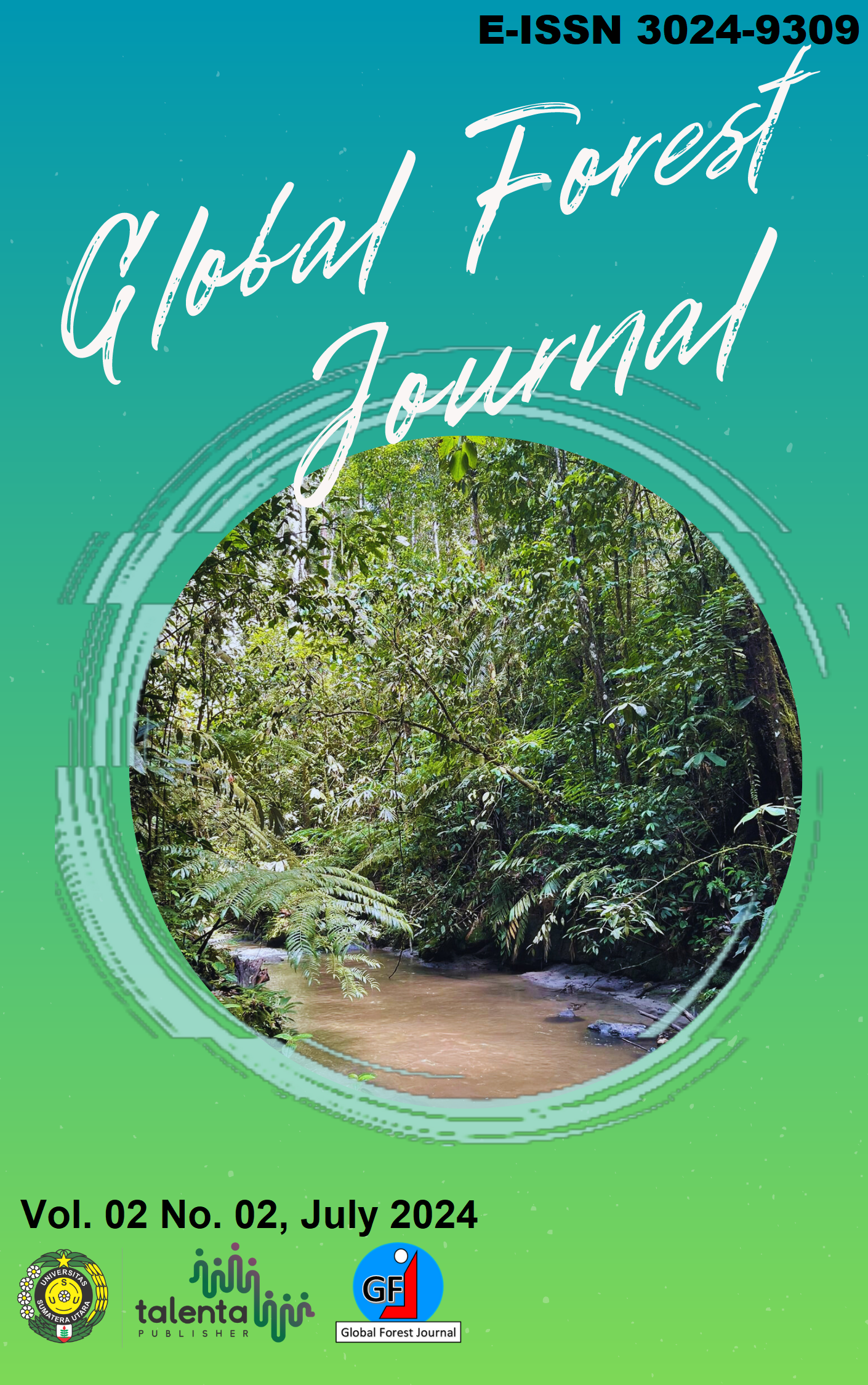Anatomical characteristic and fiber morphology of fibrovascular bundle of Indonesian nipa (Nypa fruticans) frond
DOI:
https://doi.org/10.32734/gfj.v2i02.15683Keywords:
frond, fibrovascular bundle, fiber morphology, nipaAbstract
Nipa (Nypa Fruticans) is a palm tree that grows in wetlands and mangroves. Nipa fronds possess lignocellulose and hold the potential as a viable source for producing composite boards, pulp, and paper. This research aims to identify the anatomical and morphological characteristics of nipah fronds fiber, especially in the fibrovascular bundle. Nipa fronds were observed in the radial and longitudinal directions. There are four zones in the radial direction, consisting of the outer zone (convex and concave), middle zone, and inner zone. The longitudinal positions consist of the bottom, intermediate, and upper. Anatomical characteristics were observed using a light microscope focused on the fibrovascular bundle's characteristics. Fiber morphology was measured at each position with 20 repetitions of each measurement. The results showed that the number of FVB increased from the outer zone, especially convex towards the middle and inner zone. Thus, the outer fronds are denser than the inner zone. Based on observations of fiber morphology, the concave (radial) zone in the intermediate position (longitudinal) has the longest fiber compared to the other parts. Meanwhile, the cell wall thickness is greatest at the bottom of the concave zone. The widest lumen diameter is the convex zone at the bottom position. This research can conclude that the FVB of nipa palm fronds, both longitudinal and radial, are included in quality class III, which is good enough to be used as raw material for pulp and paper.
Downloads
Downloads
Published
Issue
Section
License
Copyright (c) 2024 Global Forest Journal

This work is licensed under a Creative Commons Attribution-ShareAlike 4.0 International License.












